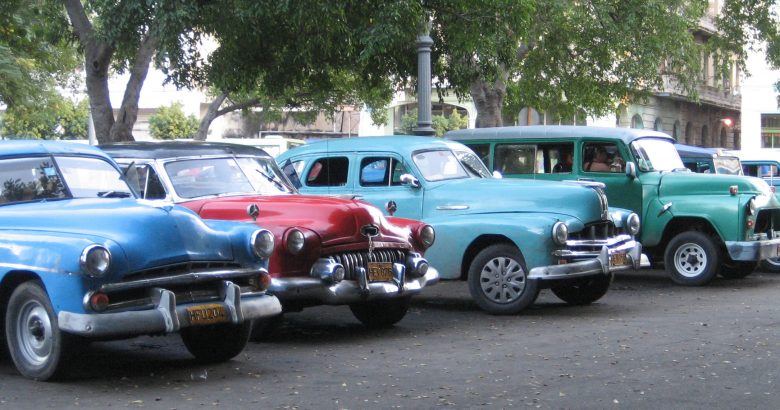
The Vintage Cars of Cuba – you don’t want one
The roads in Cuba are just packed with classic American cars. Take a look at photos of the streets of Havana and you will see classic America cars everywhere. Why is this? Since Cuba has effectively been isolated from the west for over 50 years, certain features of its society are effectively locked in time and automobiles are one of them. Take a close look and you will see that the vintage cars are primarily American cars of the 1950s. They are used just like more modern cars and see service all over the island. Vintage car buffs are going to wonder: Is this a gold mine just ready to be tapped? We asked the guys at Suburban Chrysler of Troy, MI, a Chrysler, Dodge, Jeep, Ram dealer, what they thought and here is what we were told.
We are “friendly” again
Americans have not been allowed to do business in Cuba for the last 54 years. The reason, of course, was long-standing political animosity. However, the Cold War has been over for a long time now and both Cuba and the United States have reexamined our mutual relationships. It appears that having a relationship seemed to be a good idea for both parties. The result was that US opened its embassy in Havana, and Cuba opened its embassy in Washington, DC, this year. The last time the Cuban flag flew at the US embassy was in 1961 before the U.S. broke ties with Cuba.
“These are not the cars you are looking for”
We hate to break the news but these vintage cars aren’t the vintage cars that American collectors really want. The reason: while some are in remarkably good condition, most aren’t. These are cars that have been heavily modified and patched together for over 60 years now. They are known to be patched up via duct tape, bondo and bailing twine, and few original parts are still on the vehicle. While some of them look nice from a distance, up close you will see that they are like “Frankenstein” cars.
Why is a running, patched up classic not valuable?
In Western society, the intrinsic value of vintage cars is in the originality of its parts. If there is any doubt that this is the case, just look at the value of classic cars that have “matching numbers.” If a car has the original drivetrain (matching numbers), it is far more valuable than a car that doesn’t. And, as we learned above, Cuba’s cars are nowhere near original.
Some exporting may still occur
We suspect that some exporting of Cuba’s classic cars will still occur. If a particular model isn’t available in the states, some collector will simply want it. Perhaps the greatest export interest is likely to come from Cuban exiles, though, who are proud to buy a car that is quintessentially Cuban, and representative of the era.
Source: Suburban Chrysler of Troy, MI